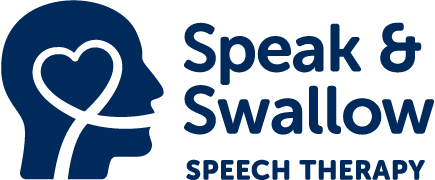The Best AAC Options for Adults
Has someone recently recommended AAC to you or someone you care for? Alternative and Augmentative Communication (AAC) can be incredibly helpful for many adults facing communication challenges in their everyday life. For some, progressive neurological conditions can impact the muscles and areas of the brain used to produce speech. For some others, lifelong conditions can mean that verbal communication is challenging – and by introducing AAC options, anyone can be equipped to engage in every area of their life with confidence.
In this article, we’ll take you through what you need to know about AAC options for adults. By the end, you’ll know what AAC is, the different types of AAC options available, and how you can get started with AAC with the support of a local Speech Pathologist.
What is Augmentative and Alternative Communication (AAC)?
AAC, or Augmentative and Alternative Communication, is a term used by communication professionals to describe the different methods anyone can use to communicate besides talking verbally. People of all ages can use AAC if they have communication difficulties this may include difficulties producing spoken words, expressing their wants and needs or can even be a great alternative for those who experience significant fatigue when communicating verbally for long periods of time.
Some adults may use AAC throughout their life, while others may need to use AAC after an accident, stroke, or new diagnosis.
Adults who can benefit from using AAC to communicate include:
- People who have autism or an intellectual disability
- People with movement difficulties such as cerebral palsy or muscular dystrophy
- People with a communication difficulties caused by stroke (aphasia) or other progressive neurological conditions
Some people use AAC to help others understand them better. Others may use AAC when they interact with people they don’t know, or when they’re in a new environment.
What AAC Options Are Available for Adults?
AAC options for adults generally fall into two main categories: unaided or aided.
Unaided AAC includes any communication strategy without the use of an external aid – so using the person’s own body (for example: blinking, gestures, facial expression).
Aided AAC is when an external aid is used to support communication. Aided AAC is divided into two categories – low/light technology, and high technology.
Low/Light Technology AAC
There are a lot of different types of low tech AAC, including:
- Writing or drawing in a book or on a whiteboard
- Spelling words by pointing to letters on a spelling board
- Pointing to photos, pictures, or written words as part of a communication book
High Technology AAC
There are also many different options for high-tech AAC. Choosing a high-tech option can take some time to get right as it is a very personalised choice – relying on a great team of allied health professionals to help make an informed selection.
Some high tech AAC options for adults include:
- Using an iPad or tablet with specialised software
- Using a dedicated speech-generating device with specialised software and various access method (e.g. eye-gaze)
A combination of low technology and high technology is often the way to go to provide dynamic communication options throughout the day. For example, an individual may use a high technology speech generating device with eye gaze access method fluently throughout the day, but chooses to use a low technology option during their hydrotherapy session (e.g laminated communication page).
Finding the right fit is the most important thing. As you can imagine – it’d be scary to have ‘no voice’, especially in new situations with unfamiliar communication partners.
How to Get Started with AAC
If you are at the beginning of your AAC journey, the best thing you can do is to find a local Speech Pathologist and allied health team to support you. A Speech Pathologist is a type of allied health professional who assesses communication and swallowing disorders.
To get started with AAC, your Speech Pathologist will first begin by getting to know the person: their unique background, needs, interests, and preferences. A thorough assessment will take place to get an idea of current communication difficulties and strengths, and from there, access methods and mounting systems will be discussed and trialled with the support of other allied health professionals, like Occupational Therapists.
After a thorough assessment, the treating Speech Pathologist will consider all the essential features and match it to a couple of device options. From there, a device trial can be organised so that the individual and their care team can see how device fits into their everyday life. It may take one or two trials, or even more, to find the right fit.

The Best AAC Options for Adults
Now that we’ve made it this far, you might be curious to know what the best AAC options are for adults. As you may have guessed, by how personalised the AAC selection process is, what is best for one person may not work for another! That’s why it is so important to work alongside a dedicated Speech Pathologist to help you find the best AAC options for you.
If you need to go down the high technology route, we are so lucky that we have many amazing AAC suppliers here in Australia: Zyteq, Liberator, Spectronics and Control Bionics – just to name a few! Your treating Speech Pathologist can help you to liaise with suppliers for trials.
Keen to get started with AAC, or interested in finding out if it might be a helpful solution for yourself or someone you care for? Get in touch with the friendly team at Speak and Swallow Speech Therapy and we’d be happy to help you begin your AAC journey.
